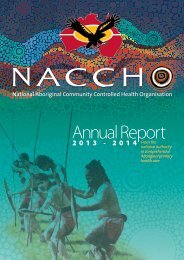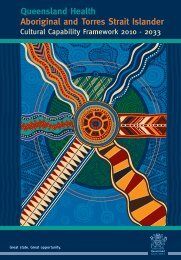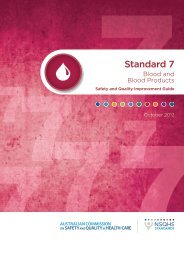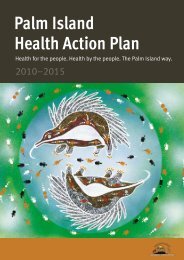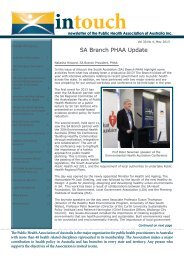CLOSING THE GAP
ctg-report-2017
ctg-report-2017
You also want an ePaper? Increase the reach of your titles
YUMPU automatically turns print PDFs into web optimized ePapers that Google loves.
“To be the great nation we can be, we<br />
have to accept and acknowledge the<br />
horrific tragedies of the past but not let the<br />
pain of the past define our future. Because<br />
I can see these stories of great change<br />
and great hope, I don’t think you can allow<br />
yourself to be broken by the negativity.<br />
This is about our resilience as a nation<br />
and our ability to build a life together.”<br />
Jeremy Donovan<br />
NATIONAL POLICY TO BUILD<br />
SAFE COMMUNITIES<br />
There are many layers to building safe and resilient<br />
communities, including adequate infrastructure<br />
and access to services. This is a significant<br />
challenge in remote communities, where families<br />
are often living in overcrowded houses which<br />
can lead to health and social problems.<br />
Addressing substance misuse, violence and<br />
incarceration are immediate priorities to ensure safe<br />
and functioning communities. While government<br />
has a crucial role to play in ensuring adequate<br />
infrastructure and services are in place, it is essential<br />
that we work closely with Aboriginal and Torres Strait<br />
Islander people to implement the local solutions.<br />
Keeping Aboriginal and Torres Strait Islander children<br />
and families safe is a priority for all governments. The<br />
National Framework for Protecting Australia’s Children<br />
2009-2020 reflects the long-term commitment of all<br />
governments and the non-government sector to ensure<br />
the safety and wellbeing of Australia’s children. One<br />
of its priorities is to reduce the over-representation<br />
of Aboriginal and Torres Strait Islander children and<br />
young people needing child protection services.<br />
The Third Action Plan of the National Framework<br />
will help reduce the likelihood of children entering<br />
the child protection system. Each strategy and<br />
action will be consistent with the five principles<br />
of the Aboriginal and Torres Strait Islander Child<br />
Placement Principle (prevention, partnership,<br />
placement, participation and connection).<br />
TRANSLATING POLICY INTO ACTION<br />
Making communities safer<br />
Reducing violence<br />
During the two years to June 2015, Indigenous<br />
Australians were hospitalised for assault at 14 times<br />
the rate of non-Indigenous Australians. Indigenous<br />
females were 30 times as likely to have been<br />
hospitalised for assault as non-Indigenous females,<br />
and Indigenous males were 9 times as likely as<br />
non-Indigenous males. This contrast is particularly<br />
stark in remote areas. The Indigenous female rate<br />
was 53 times the non-Indigenous female rate in<br />
remote areas (and 38 times in very remote areas).<br />
Indigenous children are much more likely to experience<br />
child abuse and neglect. In 2014-15, Indigenous<br />
children aged 0-17 years were 6.7 times as likely<br />
to be the subject of substantiated child protection<br />
notifications as non-Indigenous children. These<br />
problems are complex and intergenerational.<br />
Factors such as poor education and low employment<br />
contribute to Aboriginal and Torres Strait Islander people<br />
being over-represented in the criminal justice system<br />
– as at 30 June 2016 there were 10,596 prisoners who<br />
identified as Indigenous, representing 27 per cent of total<br />
prisoners (ABS, 2016). The Indigenous imprisonment<br />
rate is 13 times the rate for non-Indigenous Australians<br />
and has increased by 42 per cent since 2006. Rates<br />
of re-offending are high and in 2016 the majority (63<br />
per cent) of Indigenous Australians were in prison for<br />
violent related offences and offences that cause harm.<br />
In 2014-15, Aboriginal and Torres Strait Islander<br />
women were 32 times more likely to be hospitalised<br />
due to family violence related assaults than other<br />
<strong>CLOSING</strong> <strong>THE</strong> <strong>GAP</strong>: PRIME MINISTER'S REPORT 2017<br />
•95•



